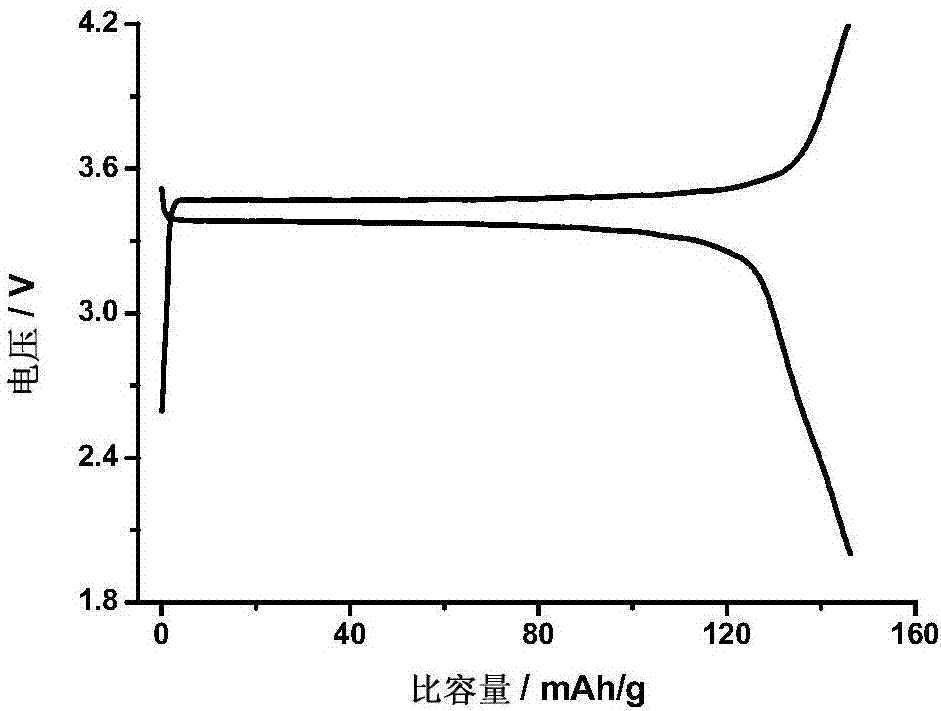Carbohydrate modified lithium conductive polymer/inorganic hybrid electrolyte and application thereof
A lithium polymer and electrolyte technology, which is applied in the direction of non-aqueous electrolytes, solid electrolytes, non-aqueous electrolyte batteries, etc., can solve the problems of flowability toxicity, restrict battery structure design, reduce energy density, etc., and achieve improved conductivity, excellent Mechanical properties, performance improvement effect
- Summary
- Abstract
- Description
- Claims
- Application Information
AI Technical Summary
Problems solved by technology
Method used
Image
Examples
Embodiment 2
[0030] Take 0.5g of starch and 10g of dimethyl sulfoxide in a flask, stir at 80°C under the protection of argon for 1 hour, then add carboxypolyethylene glycol with a molar ratio of 2:3 to the starch glucose unit, and react for 12 hours. The product is used directly to configure the electrolyte. Mix 2 g of the solution obtained from the reaction with 0.04 g of LiTFSI evenly, drop the obtained solution on the surface of the plastic film substrate, place it in a glove box and dry it at 60°C for 12 hours to obtain a solid electrolyte film with a conductivity of 4.2×10 -5 S / cm.
Embodiment 3
[0032] Take 0.5 g of sucrose and 10 g of pyridine in a flask, stir at 45°C under the protection of argon for 1 hour, and then add BH with a molar ratio of 8:3 to sucrose dropwise. 3 .THF solution, reacted for 12h, and the product solution was directly used to prepare electrolyte. 2 g of the reaction solution was mixed with 0.1 g of PEO with a molecular weight of 4 million and 0.04 g of LiTFSI and stirred evenly to form a gel. The gel was coated on the sulfur positive electrode, and it was left to stand in an argon glove box for 5 minutes. The metal Li was used as the negative electrode to assemble a button battery. The battery can obtain an initial discharge capacity of 1452mAh / g.
Embodiment 4
[0034] Take 0.5 g of agar, stir it at 95 °C under the protection of argon for 1 hour to melt it, and then add BH with a molar ratio of 1:3 to its hydroxyl group 3 .THF solution, reacted for 12h. The product obtained was ground into a powder. 0.02g of the product, 0.2g of PEO and 0.26g of LiTFSI were dissolved in acetonitrile, and after stirring evenly, the solvent evaporated into a solid electrolyte film with a conductivity of 3.8×10 -5 S / cm.
PUM
| Property | Measurement | Unit |
|---|---|---|
| electrical conductivity | aaaaa | aaaaa |
| electrical conductivity | aaaaa | aaaaa |
| electrical conductivity | aaaaa | aaaaa |
Abstract
Description
Claims
Application Information
 Login to View More
Login to View More - R&D
- Intellectual Property
- Life Sciences
- Materials
- Tech Scout
- Unparalleled Data Quality
- Higher Quality Content
- 60% Fewer Hallucinations
Browse by: Latest US Patents, China's latest patents, Technical Efficacy Thesaurus, Application Domain, Technology Topic, Popular Technical Reports.
© 2025 PatSnap. All rights reserved.Legal|Privacy policy|Modern Slavery Act Transparency Statement|Sitemap|About US| Contact US: help@patsnap.com

